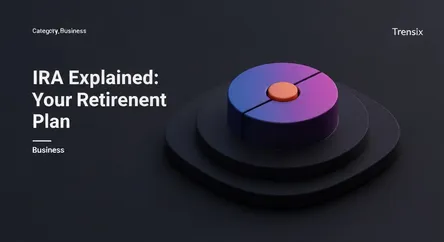Business
IRA Explained: Your Retirement Plan

An IRA (Individual Retirement Account) is a tax-advantaged tool to save for retirement. Learn the difference between Roth & Traditional IRAs.
What is it?
An Individual Retirement Account (IRA) is a tax-advantaged investment tool designed to help individuals save for retirement. Think of it as a special container that holds investments like stocks, bonds, and mutual funds, allowing them to grow with tax benefits. The two most common types are the Traditional IRA, where contributions may be tax-deductible, and the Roth IRA, where qualified withdrawals in retirement are tax-free. Unlike a 401(k), an IRA is not tied to an employer and can be opened by anyone with earned income.
Why is it trending?
IRAs are gaining attention as people become more proactive about their long-term financial planning. With uncertainty surrounding social security, personal responsibility for retirement savings is paramount. Recent legislative changes, like the SECURE 2.0 Act, have updated contribution limits and withdrawal rules, bringing IRAs into the news. Furthermore, the growth of the gig economy means more self-employed individuals are turning to IRAs as their primary retirement savings vehicle, since they lack access to employer-sponsored 401(k) plans.
How does it affect people?
An IRA directly empowers individuals to build a secure financial future. The tax advantages—either a tax break now (Traditional) or tax-free growth and withdrawals later (Roth)—can significantly boost long-term savings compared to a standard brokerage account. This allows individuals to accumulate a larger nest egg for their retirement years. Effectively managing an IRA provides financial independence and peace of mind, but it also requires understanding the rules regarding contributions, investments, and distributions to avoid penalties and maximize its powerful benefits.